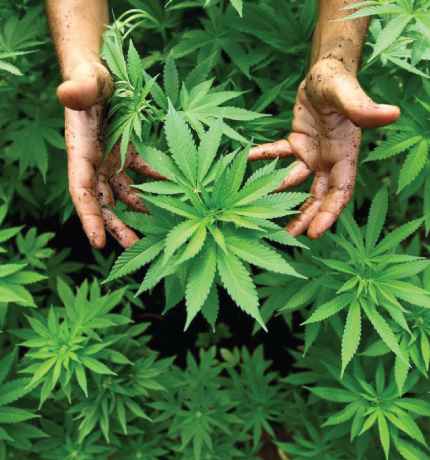Terpenes
What are Terpenes?
SIMPLY PUT:
Terpenes are a large and diverse class of organic compounds produced by a variety of plants. Terpenes are what give each flower, herb and fruit its own unique scent and flavor. Every day, everywhere you go, you encounter terpenes. When you zest a lemon, you smell terpenes. Open a jar full of herbs, what you are smelling is the terpenes. Stop and smell the roses? More like stop and smell the terpenes.
While there is so much to learn, what you need to know is that terpenes are aromatic compounds that when inhaled, applied to the skin, or consumed, they enhance our experience and greatly influence flavors and aromas.
A BIT MORE COMPLEX:
Terpenes are hydrocarbons present in essential oils produced by nature. There are more than 20,000 terpenes in existence. Plants, animals, microbes, and fungi produce terpenes to carry out necessary biological functions. This diverse class of compounds serve as vitamins, hormones, pheromones, and as part of the immune system.
One way to think of botanical terpenes is as building blocks created by plants. These building blocks are blended with other aromatic compounds in countless ways in order to produce complex essential oils, such as Lavender, Rose, Sandalwood, etc.
In addition to unique aromas, terpenes play an equally important role in influencing the way we taste, smell and feel when a plant, herb or fruit is consumed. This happens because terpenes interact synergistically with other botanical compounds and humans hormones to create a phenomenon referred to as the “entourage effect” that magnifies the benefits of the plant’s individual components.
What are Terpenes Used For?
SIMPLY PUT:
Terpenes can be added to products (food, beverages, marinades, extracts, etc.) to improve the scent or flavor, as well as enhance the overall experience.
A BIT MORE COMPLEX:
There are many diverse applications for terpenes in isolated forms as well as in complex blends. It might surprise you to know that terpenes are used in the development of food flavorings, incense, cosmetic products, organic gardening products, household cleaners, natural medicines, and perfumes.
In the past few years, product developers have used isolated terpenes in order to reverse engineer the terpene profile of popular herbs; this blend is then introduced to a formulation in order to mimic the scent and flavor of the herb.
Where do Terpenes come from?
The vast majority of our terpenes are derived from many different natural sources. There are over 20,000 terpenes in nature and they are not unique to only one species of plant. For example, some natural sources of alpha-pinene include pine trees, other coniferous trees, eucalyptus, sage, rosemary, frankincense and ironwort. The structure of terpenes are always the same no matter what plant they were isolated from. There is a myth that the source of the terpene is important, but that is not true. When terpenes are isolated from any plant, there is virtually no difference between them.
Our terpenes are extracted via steam, expression, or vacuum distillation methods and fractionally purified.
How do I use Terpenes?
A little at a time – Terpenes can be added to aromatherapy blends, diffusers, lotions, edibles, tinctures, cocktails, homemade cleaners, bug repellents, plant extracts, etc.
Undiluted Terpenes are POTENT and should never be consumed, inhaled or applied to the skin as is. In most cases, consider staying within 1-5% concentration by volume. The dilution can vary depending on the isolated terpene, blend or flavor, desired outcome, personal experience and preferences.
Terpenes must be handled with care. Always consult the SDS (Safety Data Sheets) before using and working with terpenes. SDS contain all the information you need to know including personal protective equipment, hazardous and preventive statements, etc.
What is the Entourage Effect?
SIMPLY PUT:
While there is still a great deal to be discovered and understood, what you should know is that terpenes interact synergistically to create what scientists refer to as an “entourage effect”. The entourage effect magnifies the therapeutic benefits of the plant’s individual components so that the medicinal impact of the whole plant is greater than the sum of its parts.
A BIT MORE COMPLEX:
The term “entourage effect” has become an important piece of vocabulary to describe the relationship between terpenes and other phytochemicals (chemicals made by plants).
Terpenes such as Myrcene, Nerolidol and Terpinolene have relaxing effects, while Alpha-Pinene is known to be uplifting. And when combined, they have been known to be vastly more effective than in isolation.
To learn more, check out the work of our favorite researcher, Dr. Ethan Russo. The complete version of Dr. Ethan Russo’s first paper on terpenes is available here.
Article Information Courtesy of True Terpenes which can be purchased in our store located at 910 W. International Airport Rd #A, Anchorage AK 99518 or coming soon online!


